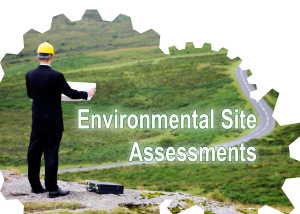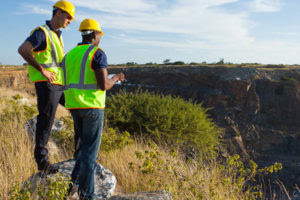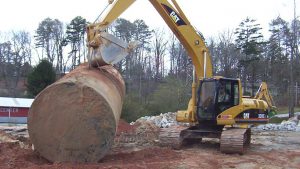
What is an ESA?
ESAs are typically conducted at properties with a history of commercial or industrial use. The Environmental Site Assessment is a process of evaluating the environmental liability of a real estate asset. Specifically, Environmental Site Assessment or “ESA” is the process of conducting “all appropriate inquiry” into the past or present uses of a property to determine whether the property is impacted by a “recognized environmental condition” (REC). The analysis typically addresses both the underlying land as well as physical improvements to the property. The ESA is the primary tool used to qualify a user for the Landowner Liability Protections under the Comprehensive Environmental Response, Compensation, and Liability Act (CERCLA).
Why do lenders ask for ESAs?
They want to ensure the efficacy of the property for the long-term loan they are putting together for a client. This is a due diligence activity to minimize any risk of future environmental issues (and potential lawsuits) related to the land.
What might trigger an ESA?
A variety of reasons for a Phase I study to be performed exist, the most common being:
- Purchase of real property by a person or entity not previously on title.
- Contemplation by a new lender to provide or refinance a loan on the subject real estate.
- Partnership buyout or principal redistribution of ownership.
- Application to a public agency for change of use or other discretionary land use permit.
- Existing property owner’s desire to understand toxic history of the property.
- Compulsion by a regulatory agency who suspects toxic conditions on the site.
- Divestiture of properties
There are three phases of ESAs:
- Phase I – Documentation review of the history of the property and surrounding properties and a physical site inspection.
- Phase II – If necessitated by the Phase I report, sampling analysis of groundwater and soil in conformance with ASTM E1903-19 standard. The Texas Commission on Environmental Quality (TCEQ) may be notified of contamination found. If so, the title is flagged that the property is contaminated and requires remediation.
- Phase III – Remediation of contamination found. The goal is a clear title which requires closure of the remediation with TCEQ.
Phase I Services
The ESA process includes a site inspection, a review of historical records of the property and research of records available at government agencies. This information is detailed and evaluated in the Phase I Environmental Site Assessment Report, and an opinion is made as to whether past or present activities may have caused a release of hazardous substances or petroleum products at the property. The purpose of a Phase I ESA is to identify Recognized Environmental Conditions (RECs) associated with a parcel of commercial real estate with respect to the range of contamination within the scope of CERCLA and petroleum products.
Phase II Services
 A Phase II Environmental Site Assessment is often warranted when a Phase I ESA identifies a REC, requiring further investigation with extended records review. The purpose of a Phase II ESA is to confirm or deny the presence of chemicals of concern in the environment. The Phase II ESA involves the sampling and laboratory analysis of multiple medias, often including soil, soil gas, and groundwater. The analytical testing results are compared to regulatory limits and criteria established by the applicable government agency. Further remedial action (Phase III) may be warranted based on the results of the Phase II ESA. If contamination is found, regulatory authorities may be notified to help Phase III cleanup and mitigation of chemicals.
A Phase II Environmental Site Assessment is often warranted when a Phase I ESA identifies a REC, requiring further investigation with extended records review. The purpose of a Phase II ESA is to confirm or deny the presence of chemicals of concern in the environment. The Phase II ESA involves the sampling and laboratory analysis of multiple medias, often including soil, soil gas, and groundwater. The analytical testing results are compared to regulatory limits and criteria established by the applicable government agency. Further remedial action (Phase III) may be warranted based on the results of the Phase II ESA. If contamination is found, regulatory authorities may be notified to help Phase III cleanup and mitigation of chemicals.
Phase III Services
An investigation involving remediation of a site. Phase III investigations aim to characterize and delineate the physical extent of contamination based on recommendations made in Phase II assessments. Phase III investigations may involve intensive testing, sampling, and monitoring, “fate and transport” studies and other modeling, and the design of feasibility studies for remediation and remedial plans. This study normally involves assessment of alternative cleanup methods, costs, and logistics. The associated reportage details the steps taken to perform site cleanup and the follow-up monitoring for residual contaminants and closure with the TCEQ.
ERC has a team of professionals who perform all phases of environmental site assessments. We offer timely turnaround and competitive pricing. Contact us today for more information and a quote.
